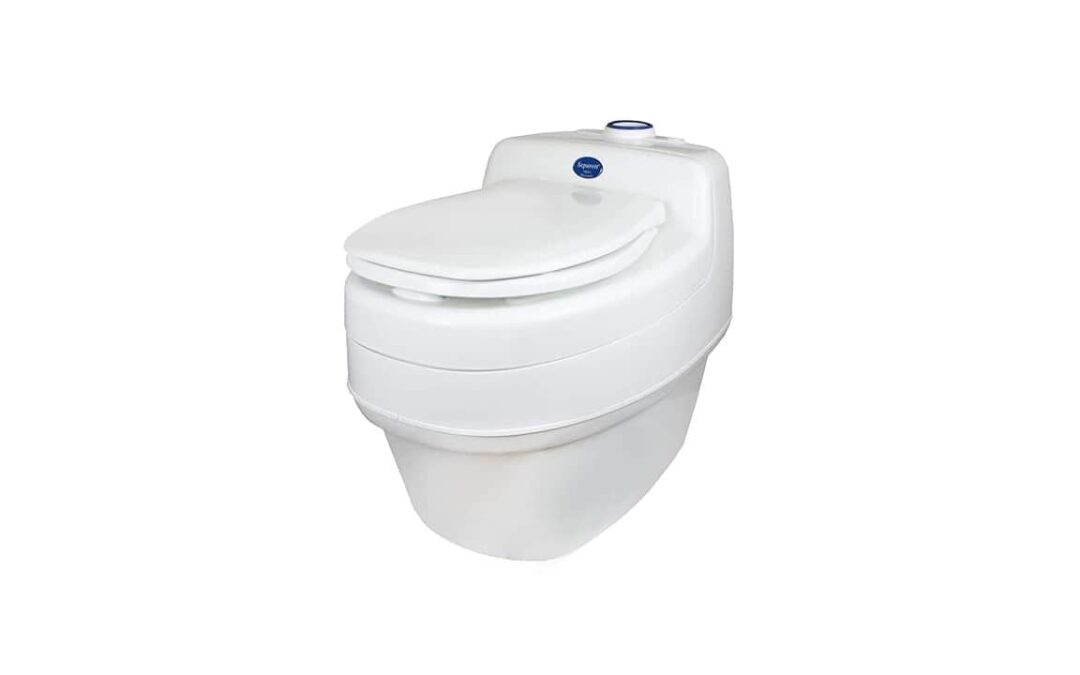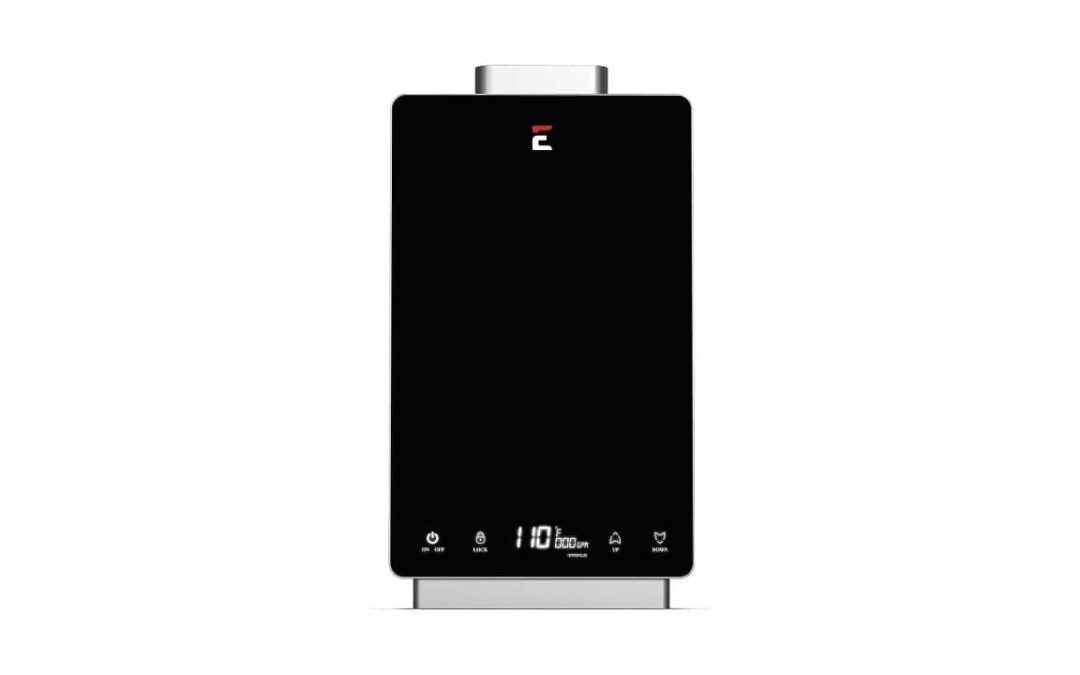Fire prevention and detection are often overlooked areas when building your dream tiny home. Tiny homes are still homes and require at least the same level of diligence when it comes to smoke alarms, carbon monoxide sensors, and other fire safety equipment.
Today’s article covers the best smoke alarms for tiny homes and RVs. We dig deep into the different models available and help you pick out the best option for your specific type of home and needs.
- #1 First Alert SCO7CN Combination Smoke and Carbon Monoxide Detector: Best Overall Smoke Alarm for Tiny Homes and RVs
- #2 Kidde Long-Life Smoke Detector: Best Dedicated Smoke Detector for Tiny Homes and RVs
- #3 First Alert SA320CN Dual-Sensor Smoke and Fire Alarm: Best Value Dual Sensor Smoke Alarm for Tiny Homes and RVs
- #4 Kidde I9030 Battery Operated Smoke Detector: Best Value Smoke Alarm for Tiny Homes and RVs
- #5 FIRST ALERT SA304CN3 Smoke Alarm with Escape Light: Best Escape Light Smoke Alarm for Tiny Homes and RVs
Read on to find our picks for the top 5 tiny home smoke alarms and to learn more about the features you should look for in high-quality tiny home smoke detectors.
1. First Alert SCO7CN Combination Smoke and Carbon Monoxide Detector: Best Overall Smoke Alarm for Tiny Homes and RVs – Link
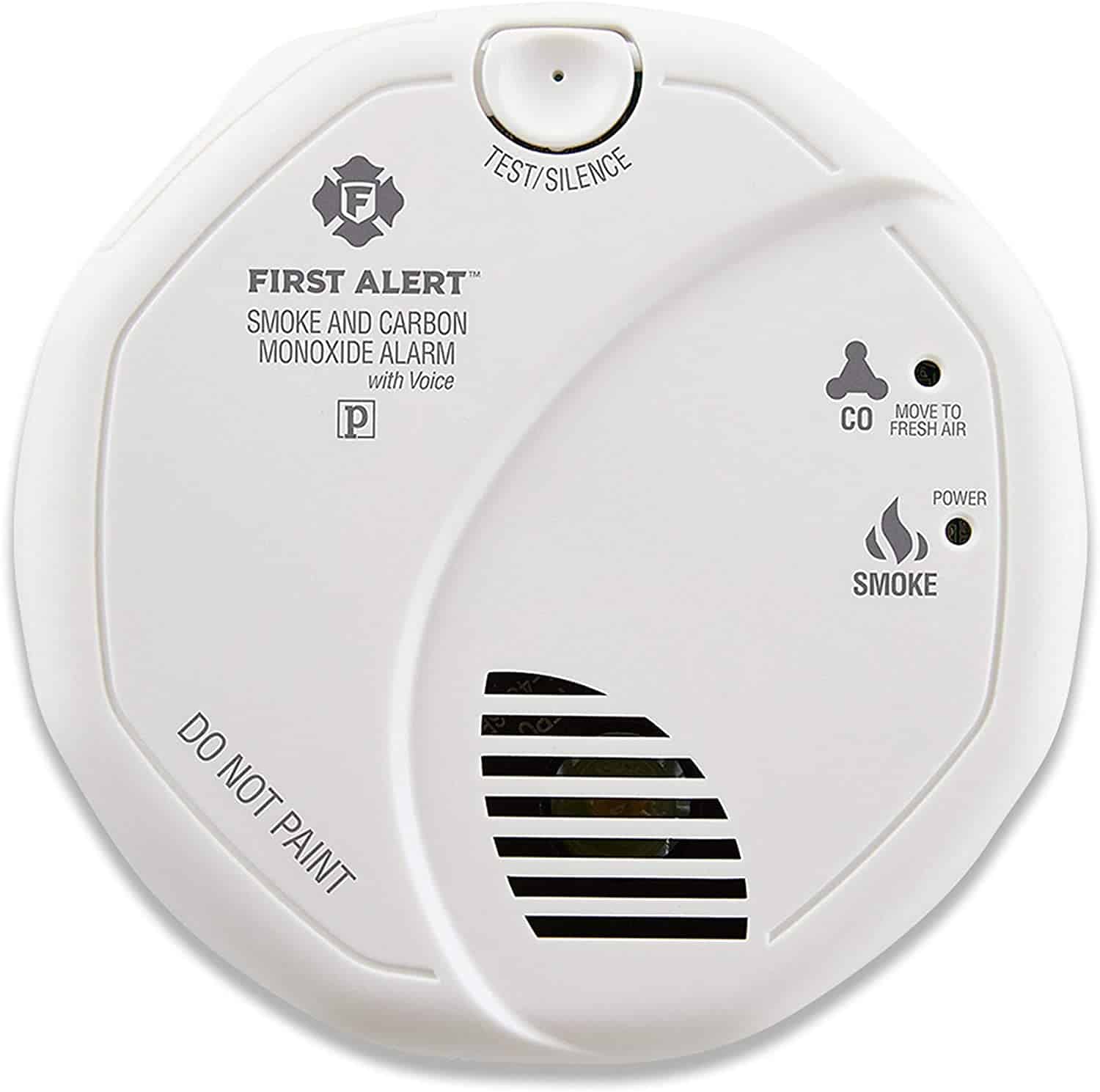
Fires aren’t the only threat facing tiny home dwellers. The First Alert SCO7CN offers dual protection against fires and carbon monoxide.
The SCO7CN is a battery-operated smoke alarm and carbon monoxide detector. It combines a photoelectric smoke sensor with an electrochemical carbon monoxide detector for highly accurate detection with fewer false alarms.
What helps set the SCO7CN out from the crowd is its use of both a blaring 85-decibel alarm tone and a voice alert. By programming your sensor, it can call out where in your home it’s detecting a fire and give you better information to escape.
It runs on a pair of AA alkaline batteries and offers a six-month lifespan. That’s par for the course on most battery-operated smoke alarms, so we can’t fault them too much for that.
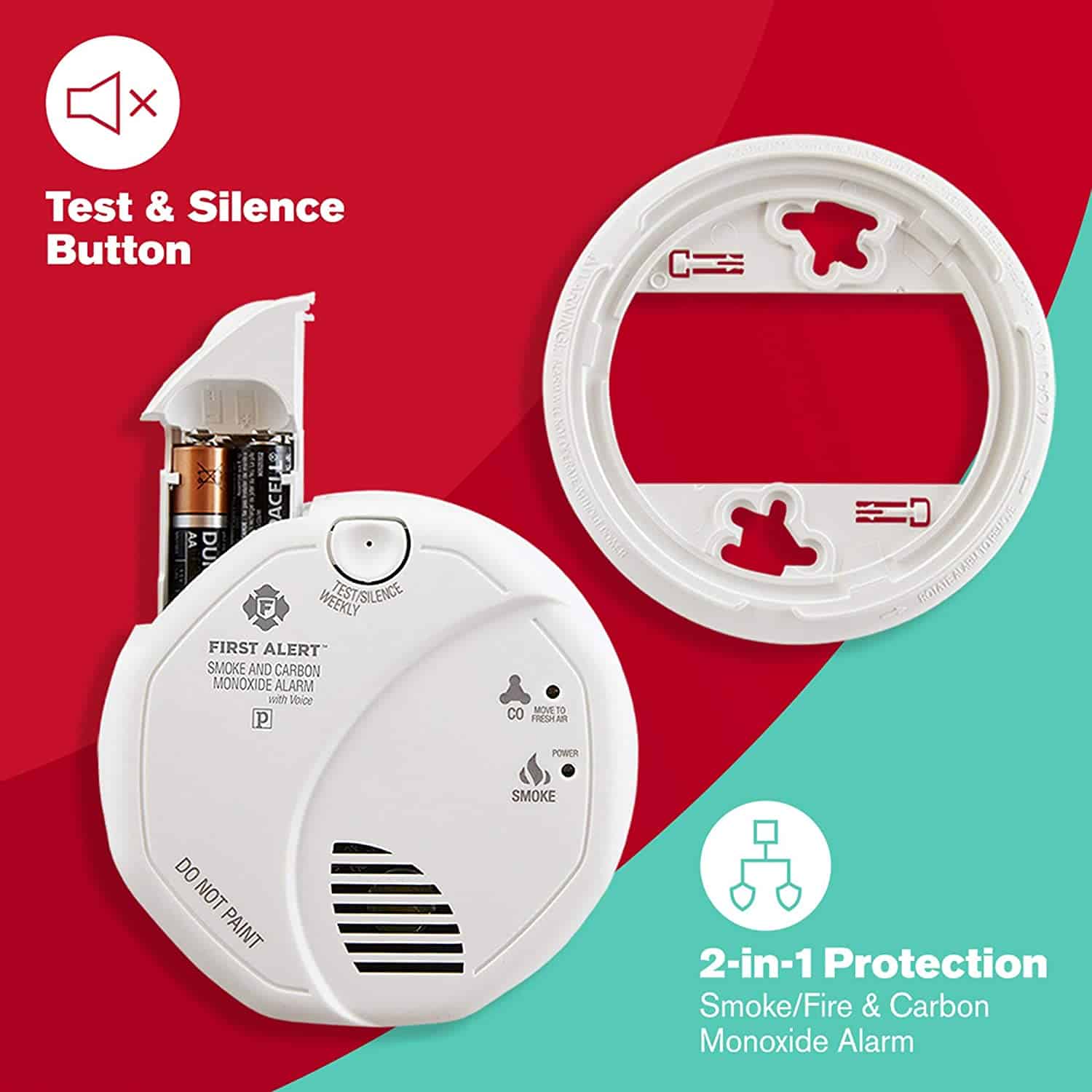
If you’re looking for a combination smoke alarm and carbon monoxide detector for your tiny home, RV, or van, the First Alert SC07CN is one of the best options available. Buy the Alert SC07CN on Amazon.
Specifications
Sensor Type: Photoelectric + Electrochemical Carbon Monoxide Detector
Alarm Type: Alarm + Voice with location assist
Battery Type and Life: Two AA Alkaline – Six Months
Pros
- Offers both smoke and carbon monoxide detection
- Gives both a piercing alarm tone and a verbal warning
- Easy to monitor and use
Cons
- Batteries need to be changed every six months
2. Kidde Long-Life Smoke Detector: Best Dedicated Smoke Detector for Tiny Homes and RVs – Link
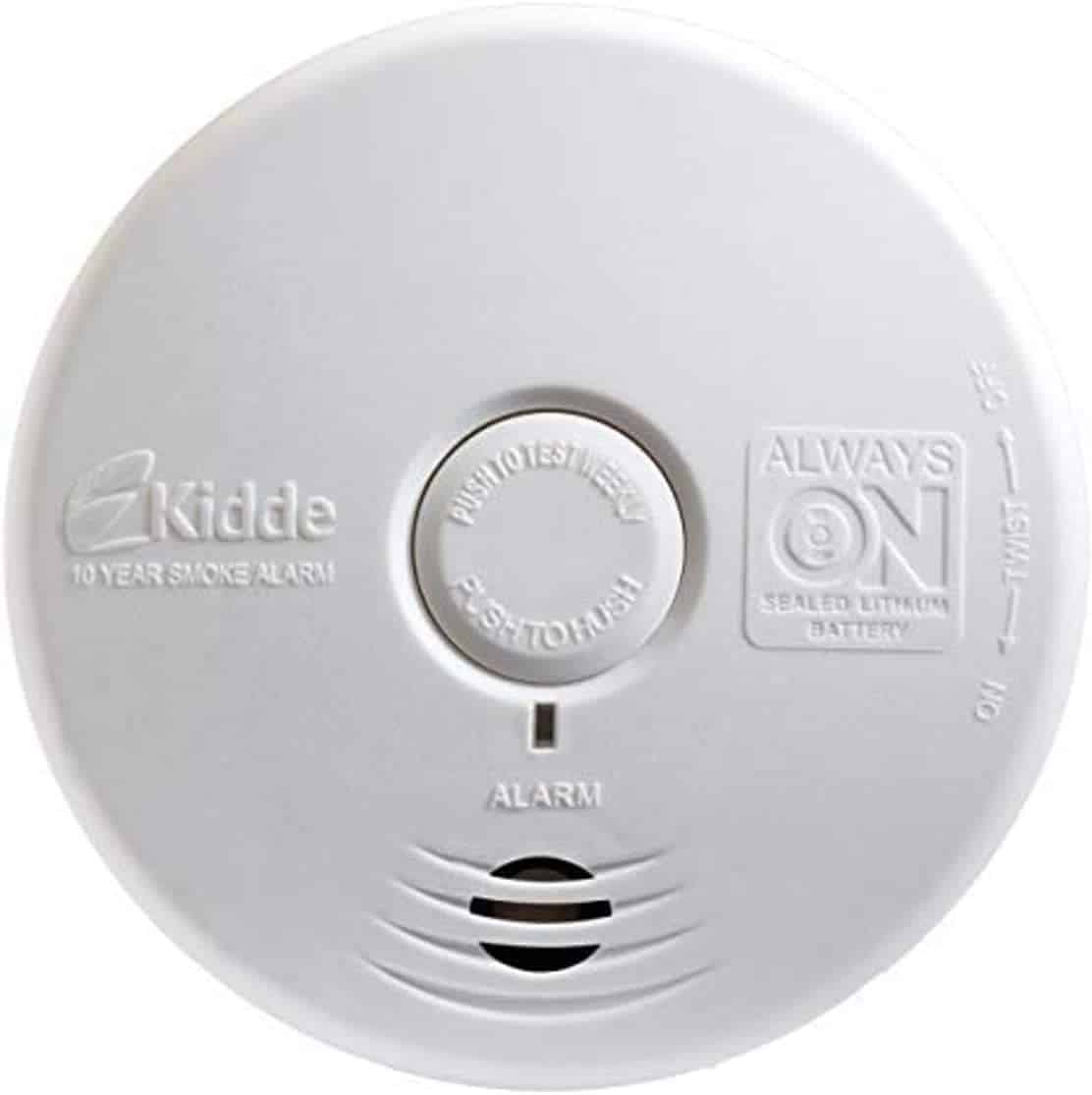
The Kidde Long-Life Smoke Detector is one of the best smoke detector options out there. It runs on the internal lithium battery for ten years and requires virtually no maintenance or upkeep over your ownership.
The Long-Life Smoke Detector uses a photoelectric sensor paired with a piercing 85-decibel alarm. It doesn’t offer fancy features such as voice alerts or an escape light, but given its long-lasting battery we can overlook that.
For tiny homes, having a smoke detector you can install in a difficult-to-access location can be a huge benefit. You can place the Long-Life Smoke Detector high on your ceiling in between lofts knowing that you won’t have to physically touch it for a decade.
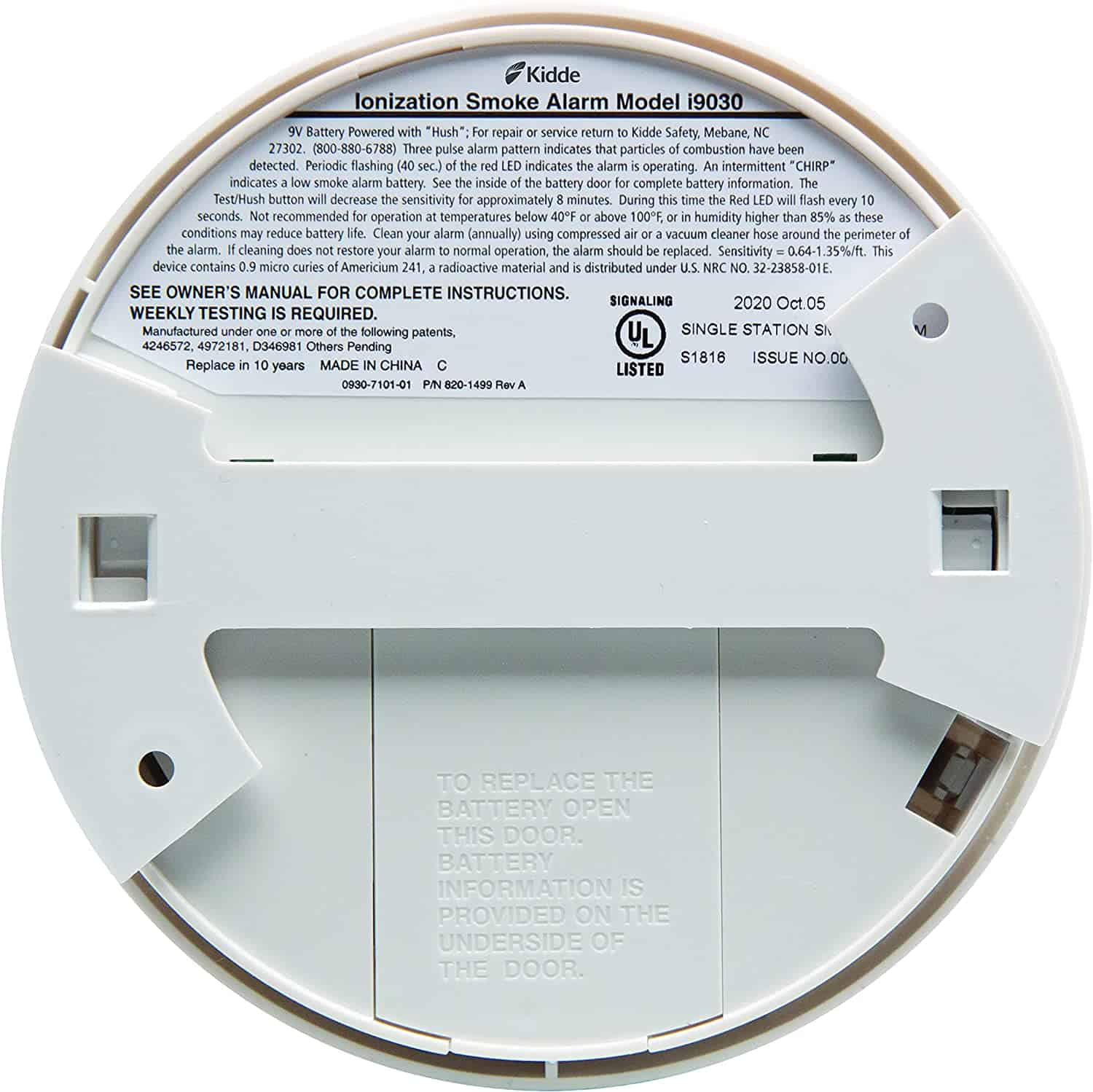
So long as you have a decently long stick or broom you can run a monthly check to verify that it’s still working properly. When the battery finally runs down the unit will chirp once every 60 seconds to alert you that it’s time for a replacement.
What the Kidde Long-Life Smoke Detector lacks in fancy features, it more than makes up for with reliability and battery life. It’s the best option for tiny home dwellers looking to place at least one smoke detector in a hard-to-reach area of their home. Buy the Kidde Long-Life Smoke Detector on Amazon.
Specifications
Sensor Type: Photoelectric
Alarm Type: 85-Decibel Alarm Tone
Battery Type and Life: Lithium | 10-Year
Pros
- Runs for ten years on a single set of batteries
- Requires virtually no maintenance
- Easy to install anywhere in your hoqwme
- UL certified with a ten-year warranty
- Great for difficult-to-access places in your home or RV
Cons
- Only offers standard alarm tone
3. First Alert SA320CN Dual-Sensor Smoke and Fire Alarm: Best Value Dual Sensor Smoke Alarm for Tiny Homes and RVs – Link

The First Alert SA320CN is a dual-sensor smoke alarm that provides reliable service at a surprisingly reasonable price. It’s battery operated, running on a pair of AA alkaline batteries that need replacement every six months, requiring no wiring or other complicated installation.
Dual-sensor smoke alarms combine both ionization and photoelectric sensors to offer the best protection from the most common types of house fires. The SA320CN stands out from the crowd by offering this level of protection at a noticeably more affordable price than many competitors.
The SA320CN achieves this by taking a no-frills approach to smoke detection. It doesn’t offer voice alerts or an escape light, nor does it have any connected features or other high-end extras.
It focuses on providing excellent smoke detection across the most likely threats and warning your family. It has an 85-decibel alarm and uses a standard test/hush button configuration.
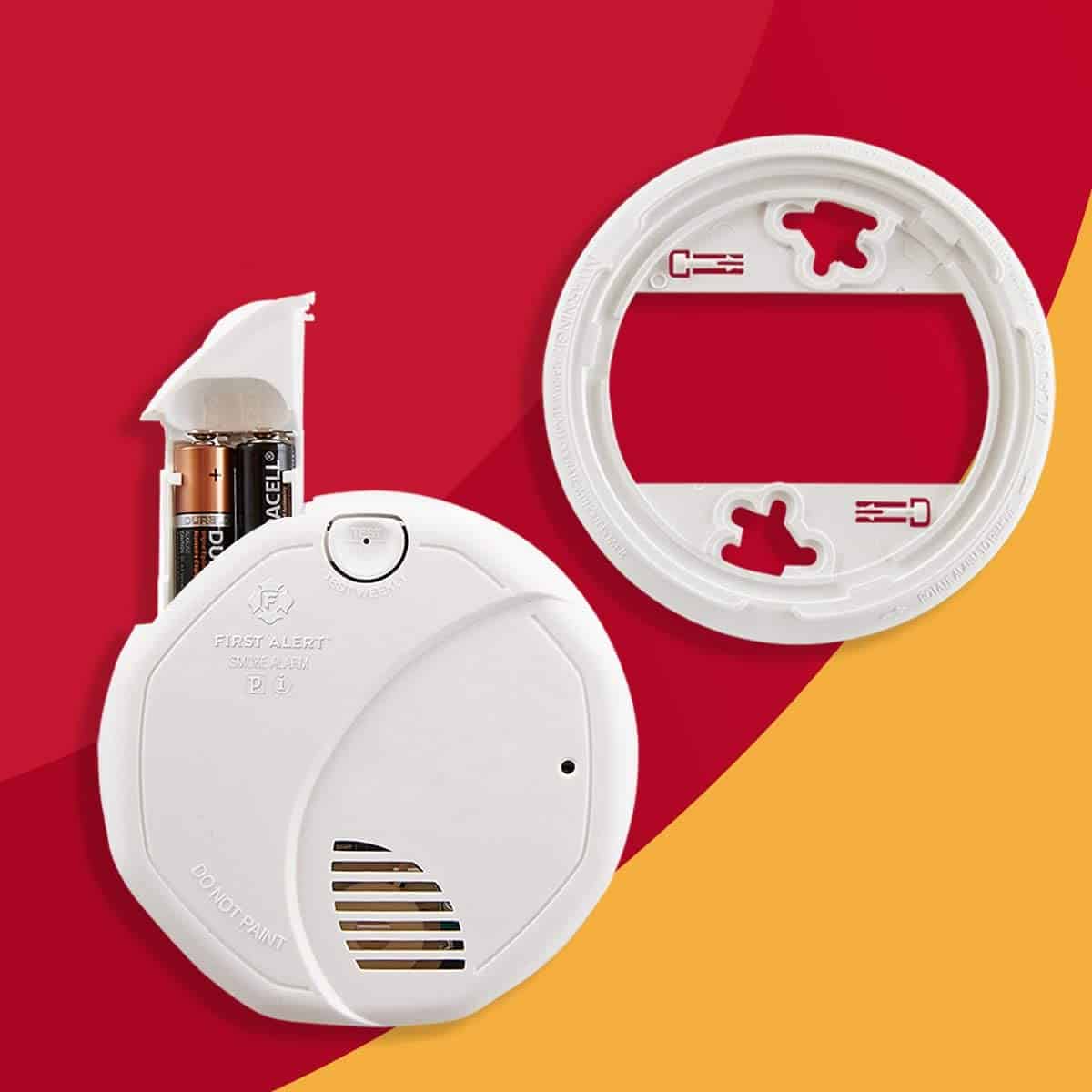
There are a few downsides to the SA320CN other than its lack of features. The included sensors are noticeably more sensitive than some others we reviewed. It was set off several times while cooking. So long as you position it further from your stove you should be good.
If you want the benefits of a dual-sensor smoke alarm without having to pay a steep price, the First Alert SA320CN is the best smoke alarm for the joke. Buy the SA320CN on Amazon.
Specifications
Sensor Type: Ionization and Photoelectric
Alarm Type: 85-Decibel Alarm Tone
Battery Type and Life: Two AA Alkaline | Six Months
Pros
- Offers advanced dual-sensor detection
- Provides the earliest warning against both smoldering and flaming fires
- Surprisingly affordable for a dual-sensor alarm
Cons
- Requires new batteries every six months
- Sensors are sensitive, needs to be placed a reasonable distance from your stovetop
4. Kidde I9030 Battery Operated Smoke Detector: Best Value Smoke Alarm for Tiny Homes and RVs – Link
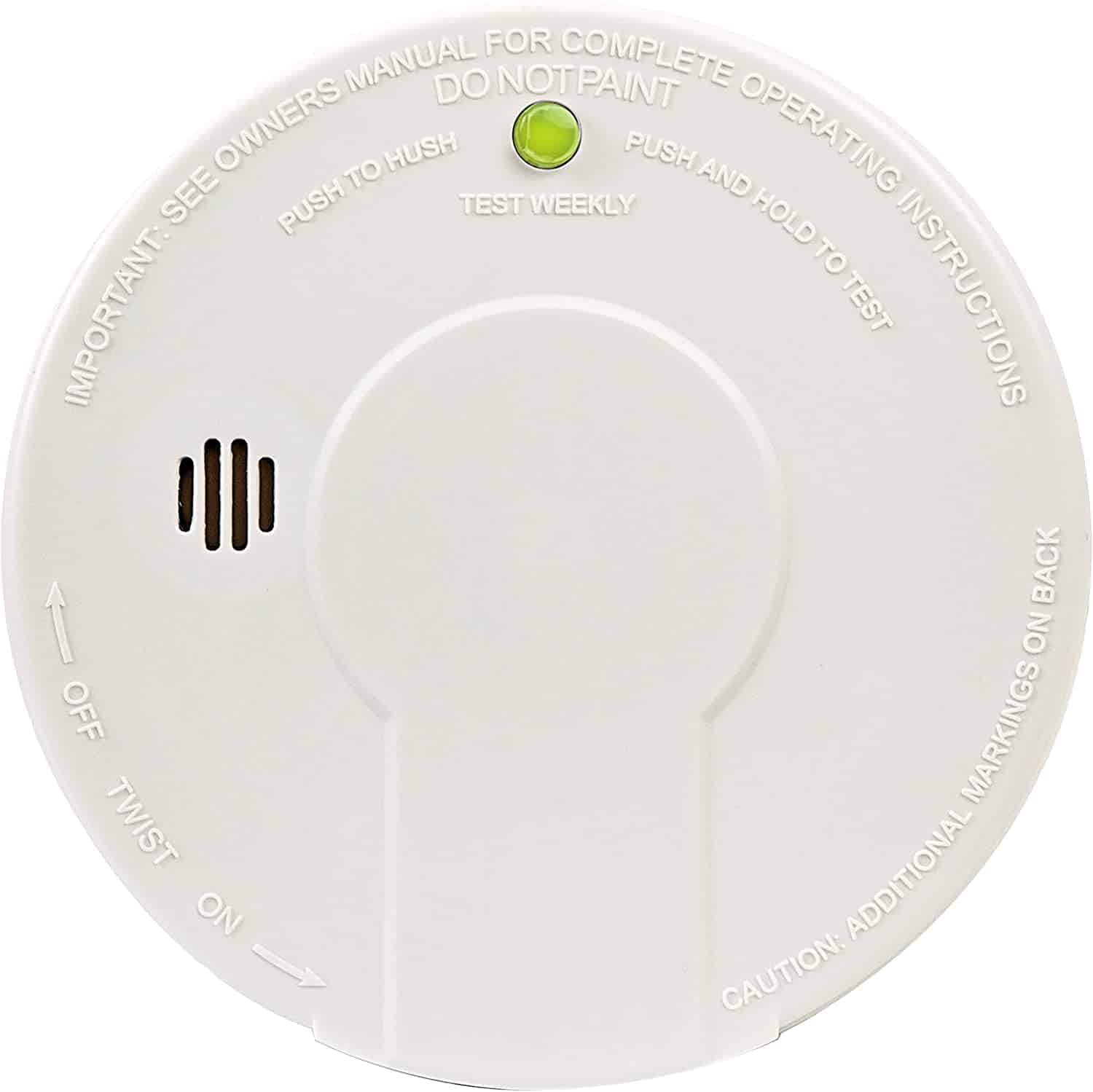
The Kidde I9030 is a value-priced battery operated smoke alarm designed to be an affordable yet reliable option for every home. It uses tried and true ionization sensor technology to warn your family against fire threats as early as possible.
The I9030 runs on a single 9-volt battery with a standard push-button testing system. It has an 85-decibel alarm and is warrantied for 3-years, with a projected lifespan of up to 10 years.

Honestly, there’s not much to say about the I9030. If you remember your parent’s smoke detectors from when you were a kid this is pretty much what they looked like and did.
The Kidde I9030 isn’t fancy, or advanced, and it doesn’t offer any extras. What it does is provide you with essential protection from fire and smoke at a price that’s attainable for anyone. Buy the Kidde I9030 on Amazon.
Specifications
Sensor Type: Ionization
Alarm Type: 85-Decibel Alarm Tone
Battery Type and Life: 9-Volt | Six Months
Pros
- Reliable design
- Runs on standard 9-volt battery
- Very affordable
Cons
- Only offers a 3-year warranty
- Definitely an older design
- Battery requires replacement every six months
5. FIRST ALERT SA304CN3 Smoke Alarm with Escape Light: Best Escape Light Smoke Alarm for Tiny Homes and RVs – Link
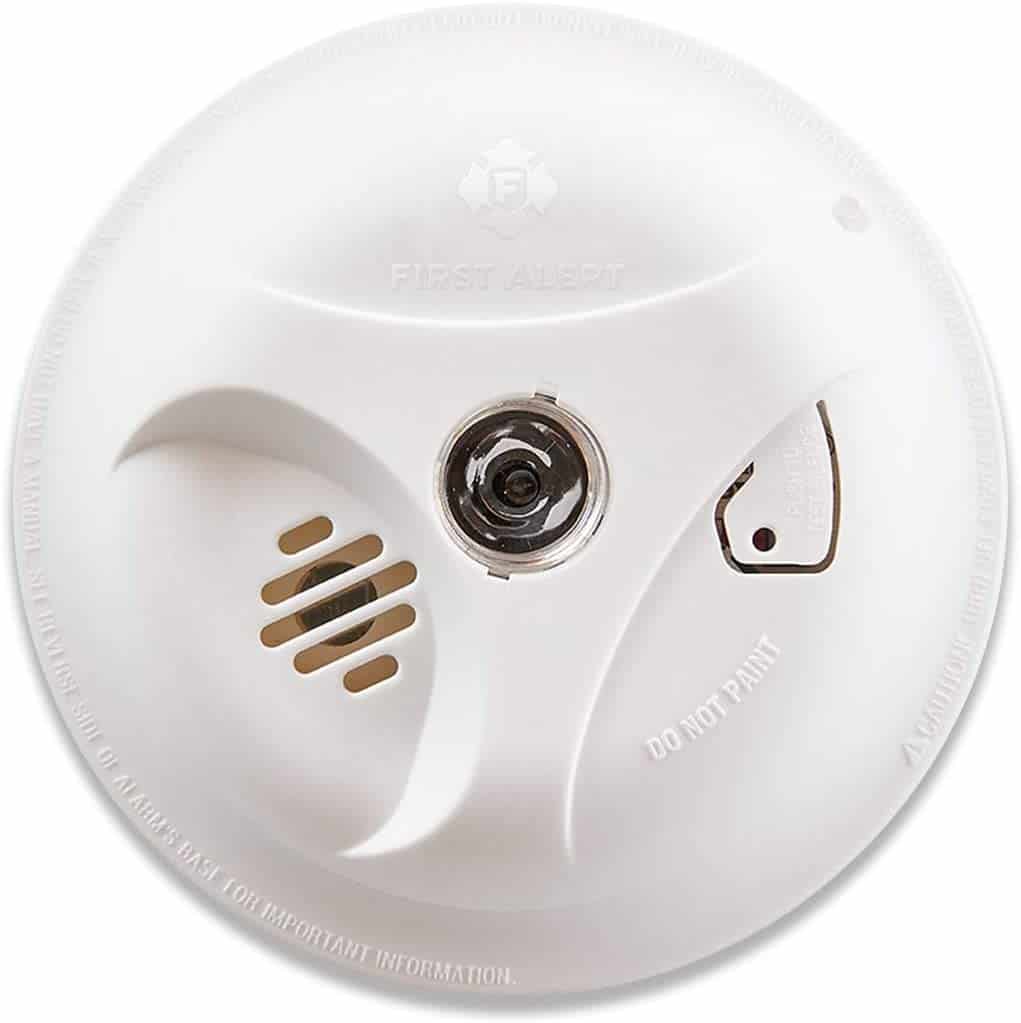
The First Alert SA304CN3 is a value-priced smoke alarm that somehow finds a way to pack in an LED escape light. It runs on a single 9-volt battery and offers a compelling mix of features for the value end of the smoke alarm market.
The SA304CN3 is an ionization sensor smoke alarm with an 85-decibel alarm. It offers a good mix of affordability and protection plus the added bonus of a serviceable escape light.
One thing we should get clear, the escape light isn’t exactly brilliant nor bright. It’s run by a single 9-volt battery after all. Still, in our testing it does a pretty good job of giving waypoints within a dark hallway or room and offers enough light to find your way to a door or window.
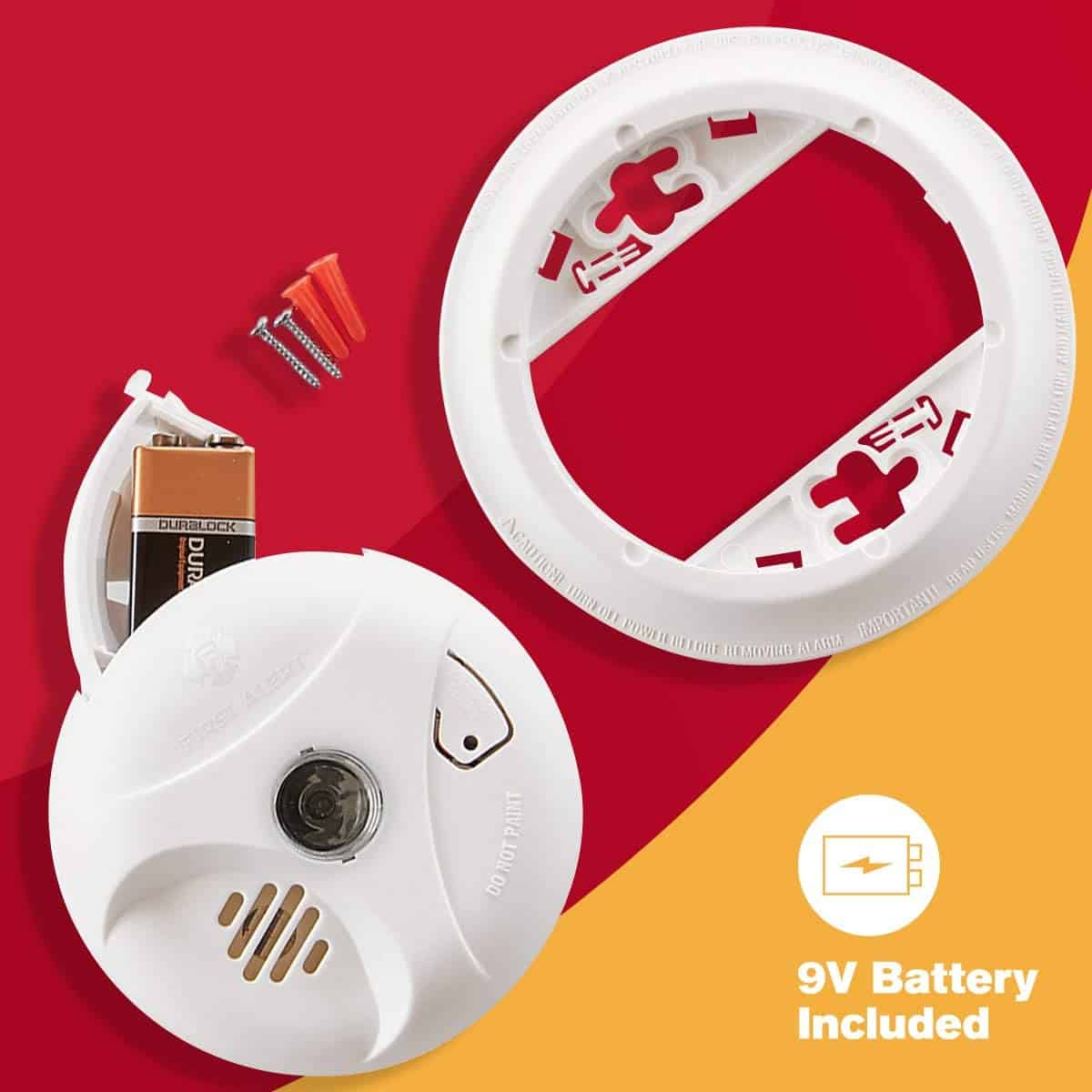
There are certainly higher-end smoke detectors out there, and particularly more powerful escape lights, but for the price it’s hard to argue with the value proposition of the First Alert SA304CN3. Buy the First Alert SA304CN3 on Amazon.
Specifications
Sensor Type: Ionization
Alarm Type: 85-Decibel Alarm Tone
Battery Type and Life: 9-Volt | Six Months
Pros
- Incredibly affordable for a smoke alarm with an escape light
- Escape light offers enough light to find your way out of a dark or smoke filled home
- Runs on standard 9-volt batteries
- Includes a 10-year warranty
Cons
- Escape light is dimmer than on other smoke alarms
How Many Smoke Detectors Do I Need?
Knowing how many smoke detectors you need depends on what kind of home you’re living in and its configuration. Vans, tiny homes, and RVs all have different layouts and require different numbers and placement of smoke alarms.
Tiny homes are pretty small but often have at least one or two enclosed areas separate from the central zone such as a bathroom or a bedroom. You should have one high-quality smoke alarm in the central area of your tiny home near your kitchen and another in any separate rooms.
Whether or not you need a smoke detector in your bedroom depends on if you’re in a sleeping loft or a fully enclosed bedroom. The main smoke alarm is adequate for lofts, though there’s no harm in adding one for a backup. A second smoke alarm is essential for enclosed bedrooms.
RVs are an interesting proposition when it comes to placing smoke alarms because of how many tiny nooks and crannies they often have. You should absolutely have a smoke alarm in the main area, as well as one in the driver’s cab near the engine (a common source of fires in an RV).
You should also put a smoke alarm and a carbon monoxide detector in each room of RVs with separate bedrooms.
Vans are easy when it comes to smoke detectors. Go with one high-quality unit, preferably a dual-sensor, in the central area near your bed/sleeping area. Vans are rarely large enough to need more.
Tiny House Smoke Alarm Buying Guide
There aren’t a ton of factors that go into picking the best smoke alarm for tiny homes or RVs. You need to understand the different kinds of sensors that go into detecting smoke, the options available in terms of alarms, what type of battery life you need, and which brands you can trust.
Sensor Type
Many people are unaware that there are two types of smoke alarm sensors, ionization and photoelectric. Both types of sensors detect the presence of smoke in your home but do so in different ways that impact how quickly they detect different types of fires.
Ionization sensors use a small and safe amount of radioactive material between two electrically charged plates. When smoke moves into the chamber it disrupts the flow between these two plates and triggers the alarm.
Ionization sensors are most responsive to flaming fires.
Photoelectric sensors aim a beam of light into a sensing chamber and reflect it onto a sensor. When smoke particles enter the sensing chamber they disrupt the beam of light and trigger the alarm.
Photoelectric sensors are most responsive to smoldering fires.
That said, both sensor types will detect smoldering and flaming fires. Each just has a slight edge over the other.
Manufacturers also make dual-sensor smoke alarms. These have ionization and photoelectric sensors and provide the best detection capability against all types of fire. The downside is that dual-sensor smoke alarms are more expensive than single-sensor ones.
We recommend you get at least one dual-sensor smoke alarm for your kitchen. If budget permits, you should get all dual-sensor smoke alarms.
Alarm Methods
Old-school smoke detectors let off a piercing shriek when smoke is detected but don’t give you any more information about what’s happening. Modern smoke detectors for tiny homes can provide a shrieking tone, a spoken warning, and even visual flashes or escape lights.
Flashing lights, in particular, can be very helpful to the hard of hearing and provide a source of light in an emergency. Even small fires produce a lot of smoke. It can be challenging to see where you’re going through smoke-filled rooms while trying to escape with your family.
Having a built-in escape light that triggers alongside your alarm can be a life-saving benefit.
Value-priced smoke alarms focus on providing the essentials at an approachable price point for any family, so they generally don’t offer more than a basic alarm. They’re still excellent at detecting smoke.
More is always better when it comes to fire protection, so we recommend using smoke alarms that offer the most methods to alert your family. Trust us, smoke alarms and detectors are not somewhere you want to skimp or cut corners.
Power Options and Battery Life
Smoke detectors have come a long way since we were kids. Many home alarms integrate directly with home power and rely on batteries as backups only. These are great for traditional homes but generally less valuable to those in tiny homes, RVs, and particularly vans.
We recommend you go with the purely battery-operated smoke alarms for most tiny homes. In the past, that would mean you’d hear the dreaded low battery beep at some point. Thankfully, manufacturers have been hard at work redesigning battery-operated smoke alarms to all but eliminate those moments.
Many battery-operated smoke alarms now come with long-lasting lithium-ion batteries. The best battery-operated smoke alarms for tiny homes can have a battery life that runs up to 10 years without requiring a replacement.
While batteries may last much longer, please remember that you must regularly test your smoke alarm. Do so at least once a month and promptly make any needed repairs or replacements.
Brands We Trust
When it comes to the best smoke alarms for tiny homes, there are just two companies you need to know: Kidde and First Alert. They’ve been making high-quality smoke detectors, carbon monoxide sensors, and other safety equipment for decades.
Recently there has been an influx of startups and tech companies trying to move into the smoke alarm market with smart alarms that interconnect with your devices. Some are very nice but don’t make sense in a tiny home or RV setting.
Kidde and First Alert both use high-quality sensors paired with proven designs that are effective and easy to maintain. Both offer products with a range of price points attainable by anyone and have a long track record of safety and reliability.


